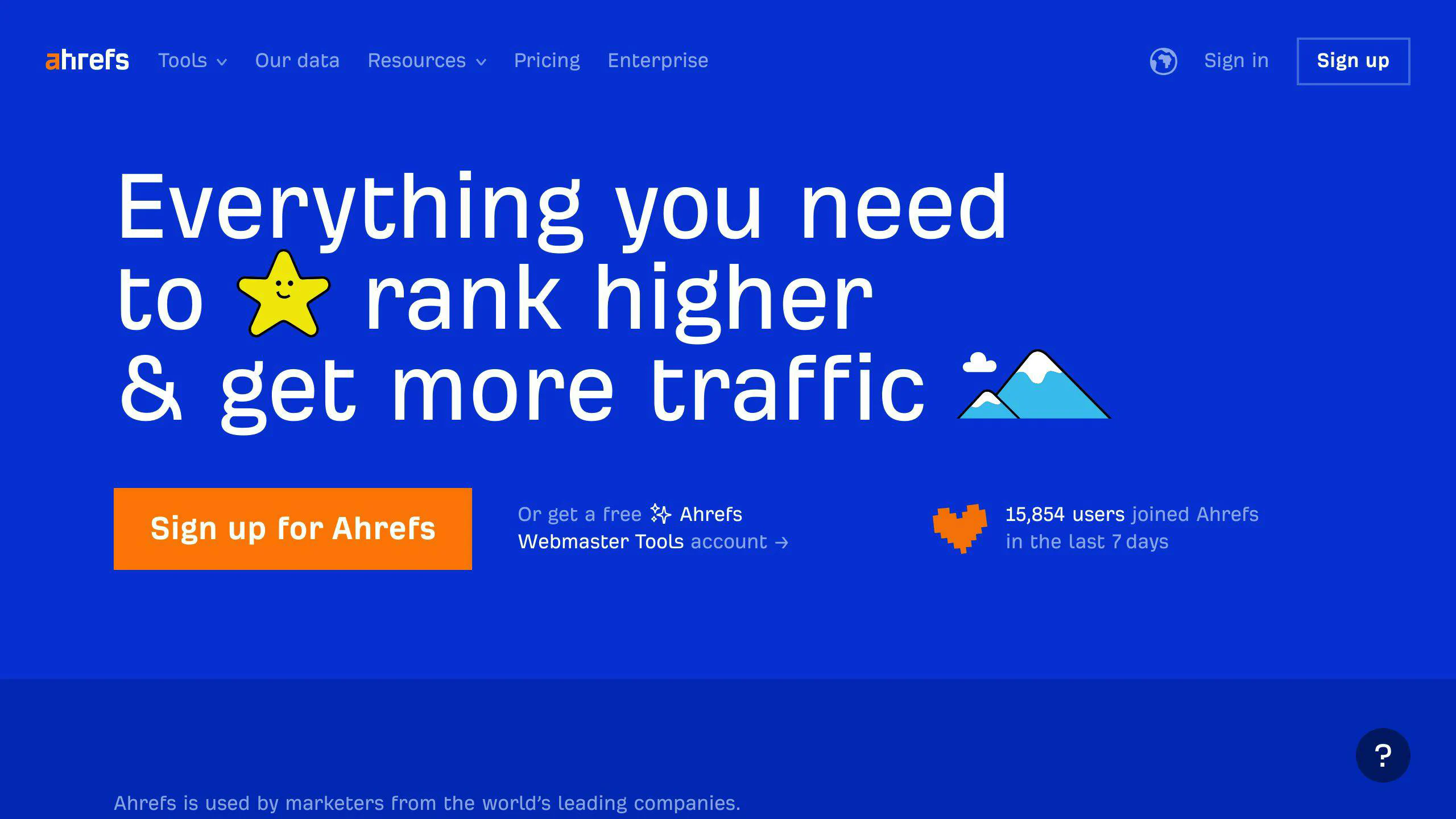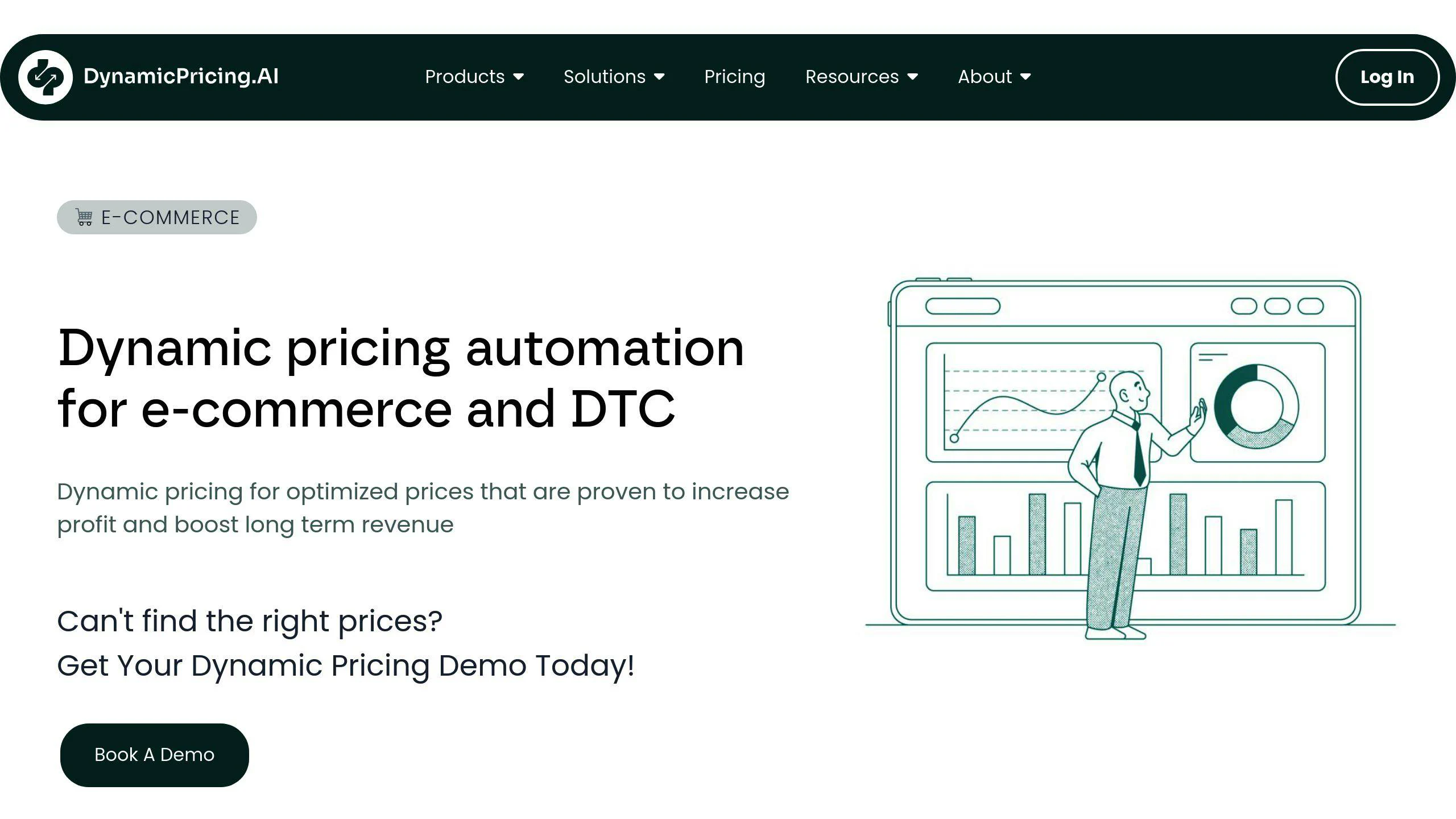Web Scraping for Competitive Intelligence: 7 Benefits
August 20, 202412 minutes
Discover the 7 key benefits of web scraping for competitive intelligence, from real-time insights to improved product development.

Web scraping is a powerful tool for gathering competitive intelligence. Here’s how it can give your business an edge:
- Automated Data Collection
- Real-Time Market Insights
- Comprehensive Competitor Analysis
- Enhanced Price Optimization
- Improved Product Development
- Efficient Lead Generation
- Trend Forecasting and Industry Monitoring
Web scraping lets you quickly gather large amounts of data from websites, social media, and e-commerce platforms. This data helps you make smarter decisions about pricing, products, and marketing strategies.
| Benefit | What It Does |
|---|---|
| Automated data collection | Gathers info quickly and efficiently |
| Real-time insights | Tracks market changes as they happen |
| Competitor analysis | Gives detailed info on rival strategies |
| Price optimization | Helps set competitive prices |
| Product development | Spots gaps and trends in the market |
| Lead generation | Finds potential customers faster |
| Trend forecasting | Predicts future market shifts |
Remember: Always use web scraping responsibly. Follow website rules, respect data privacy laws, and use the information ethically.
Related video from YouTube
How Web Scraping Helps Competitive Intelligence
Web scraping is a key tool for gathering business information quickly and efficiently. It allows companies to collect data from many online sources, including competitor websites, social media, and e-commerce platforms.
Here’s how web scraping boosts competitive intelligence efforts:
- Automated Data Collection: Web scraping tools can gather large amounts of data in minutes, saving time and effort compared to manual research.
- Real-Time Insights: Companies can track competitor activities as they happen, allowing for faster responses to market changes.
- Broad Data Sources: Web scraping pulls information from various online platforms, providing a fuller picture of the competitive landscape.
- Structured Data: The collected information is organized into easy-to-analyze formats, enabling quick insights.
| Web Scraping Use Cases | Benefits |
|---|---|
| Price monitoring | Track competitor pricing in real-time |
| Product analysis | Compare features and offerings across brands |
| Customer sentiment | Gather feedback from reviews and social media |
| Market trends | Identify emerging patterns in the industry |
Web scraping helps businesses make data-driven decisions by providing up-to-date, comprehensive information about their market and competitors.
“Web scraping is a powerful tool that can provide valuable insights into the competition’s strategies.”
By using web scraping for competitive intelligence, companies can:
- Stay informed about competitor pricing and product changes
- Identify new market opportunities
- Improve their own strategies based on industry best practices
- Monitor their brand reputation compared to competitors
While web scraping offers many benefits, it’s important to use it ethically and legally, respecting website terms of service and data privacy laws.
1. Automated Data Collection
Web scraping tools can gather large amounts of data quickly and efficiently, saving time and effort compared to manual research. This automated approach allows businesses to collect data from many online sources, including competitor websites, social media, and e-commerce platforms.
Key benefits of automated data collection for competitive intelligence:
- Speed: Process large volumes of data in minutes instead of days
- Accuracy: Reduce human errors in data entry and processing
- Consistency: Ensure uniform data collection across multiple sources
- Scalability: Easily expand data collection as needed
| Data Source | Types of Information Collected |
|---|---|
| Competitor websites | Product details, pricing, features |
| Social media | Customer sentiment, brand mentions |
| E-commerce platforms | Sales rankings, customer reviews |
| Industry news sites | Market trends, company announcements |
Automated data collection tools use advanced technologies like optical character recognition (OCR) and machine learning to extract and process information. For example, OCR can convert images of text into machine-readable data, while AI algorithms can categorize and analyze the collected information.
A study by Experian found that organizations using automated data collection tools reported a 25% reduction in data errors. This improvement in accuracy can lead to better decision-making and more effective competitive strategies.
To implement automated data collection:
- Choose the right web scraping tool for your needs
- Identify key data sources and types of information to collect
- Set up regular data collection schedules
- Ensure compliance with website terms of service and data privacy laws
- Integrate collected data with your analysis tools and processes
2. Real-Time Market Insights
Web scraping gives businesses up-to-the-minute data on market trends, competitor actions, and customer behavior. This allows companies to make quick, informed decisions to stay ahead.
Key benefits of real-time market insights through web scraping:
- Spot emerging trends: Identify new market opportunities before competitors
- Monitor competitor activity: Track pricing changes, new product launches, and marketing campaigns
- Gauge customer sentiment: Analyze reviews and social media mentions as they happen
Here’s how businesses use real-time web scraping data:
| Use Case | Description | Example |
|---|---|---|
| Price optimization | Track competitor prices to adjust your own | A clothing retailer adjusts prices daily based on competitor data |
| Product development | Identify features customers want | A tech company adds new features based on forum discussions |
| Marketing strategy | Tailor campaigns to current trends | A food brand creates content around trending ingredients |
“Web scraping transforms business market analysis. It allows organizations to gain an edge, make quick decisions, and improve adaptability.” - Mary D’souza
By constantly gathering fresh data, companies can:
- Respond faster to market changes
- Predict customer needs more accurately
- Stay one step ahead of competitors
To implement real-time market insights:
- Choose key data sources (e.g. competitor websites, review sites, social media)
- Set up automated scraping at regular intervals (hourly, daily, etc.)
- Use data visualization tools to spot trends quickly
- Create alerts for significant changes or thresholds
3. Comprehensive Competitor Analysis
Web scraping helps businesses gather detailed information about their competitors, giving them a clear picture of the market landscape. Here’s how web scraping aids in competitor analysis:
Product and Pricing Insights
Web scraping tools can extract product information and pricing data from competitor websites. This allows businesses to:
- Track price changes in real-time
- Identify new product launches
- Analyze product features and specifications
| Insight | Benefit |
|---|---|
| Price changes | Adjust pricing strategy |
| New products | Spot market trends |
| Feature analysis | Improve own offerings |
Marketing Strategy Analysis
By scraping competitors’ websites and social media profiles, businesses can gain insights into their marketing tactics:
- Content strategies
- Social media engagement
- Email marketing campaigns
Customer Sentiment Analysis
Web scraping tools can collect customer reviews and comments from various platforms, helping businesses:
- Identify competitors’ strengths and weaknesses
- Spot gaps in the market
- Improve their own products or services
SEO and Traffic Analysis
Using web scraping, businesses can analyze competitors’ SEO strategies:
- Keyword rankings
- Backlink profiles
- Website traffic estimates
This information helps in fine-tuning SEO efforts and content strategies.
Case Study: Ahrefs

Ahrefs, an SEO software company, uses web scraping to provide users with competitor analysis tools. Their Site Explorer feature allows businesses to:
- See competitors’ top-performing content
- Analyze backlink profiles
- Identify keyword gaps
By leveraging these insights, businesses can make data-driven decisions to improve their market position.
Web scraping for competitor analysis gives businesses a 360-degree view of their market, helping them stay ahead in a fast-paced business environment.
Transform your data with AI-powered web scraping
Convert any website into a custom API with our AI web scraper API. Extract competitor data, monitor trends, and gather actionable insights with real-time, customizable data extraction to power your projects and streamline your workflow.
4. Enhanced Price Optimization
Web scraping helps businesses fine-tune their pricing strategies by gathering real-time data on competitor prices. This allows companies to adjust their prices quickly and stay competitive in the market.
Here’s how web scraping enhances price optimization:
Real-Time Competitor Monitoring
Web scraping tools can automatically collect pricing data from competitor websites, allowing businesses to:
- Track price changes across multiple platforms
- Identify pricing trends and patterns
- Respond quickly to market fluctuations
Dynamic Pricing Strategies
With up-to-date pricing information, businesses can implement dynamic pricing models:
| Strategy | Description |
|---|---|
| Time-based pricing | Adjust prices based on time of day or season |
| Demand-based pricing | Increase or decrease prices based on current demand |
| Competitor-based pricing | Set prices in relation to competitors’ offerings |
Improved Profit Margins
By analyzing competitor pricing data, businesses can find the sweet spot between competitiveness and profitability. For example:
“A 1% increase in price can result in an 11.1% boost in operating profit, far exceeding the benefits gained from adjustments in variable costs, volume, or fixed costs.” - Michael Marn and Robert Rosiello, McKinsey
Personalized Pricing
Web scraping can help businesses gather data on customer behavior and preferences, enabling:
- Tailored pricing for different customer segments
- Special discounts for loyal customers
- Upsell and cross-sell opportunities
Market Trend Analysis
By scraping pricing data over time, businesses can:
- Identify long-term pricing trends in their industry
- Predict future price movements
- Make data-driven decisions on product development and inventory management
Case Study: Dynamic Pricing AI

Dynamic Pricing AI, a pricing optimization platform, uses web scraping and AI to help e-commerce businesses improve their pricing strategies. Their approach has led to:
- 15% increase in profit for a DTC brand
- 20% boost in long-term revenue
5. Improved Product Development
Web scraping helps companies make smarter choices about their products. By gathering data on what competitors are doing, businesses can spot gaps in the market and come up with new ideas.
Here’s how web scraping boosts product development:
Quick Market Research
Web scraping tools can collect large amounts of data fast. This lets companies:
- Track competitor product updates
- Spot new features in the market
- Find out what customers are saying about products
Spotting Trends Early
By scraping data regularly, businesses can see patterns forming:
| Benefit | How It Helps |
|---|---|
| New feature detection | Spot what competitors are adding to their products |
| Customer preference shifts | See changes in what people are looking for |
| Pricing trends | Track how prices are moving in the market |
Real-World Example
Zyte API, a web scraping tool, shows how this works in practice:
“Zyte APIs AI Scraping can extract product data in minutes, making it 50x cheaper and 56% more accurate than LLMs like ChatGPT.”
This means companies can get detailed product info quickly and cheaply, helping them make fast, informed decisions.
Focused Innovation
With scraped data, product teams can:
- Find weak spots in competitor products
- Create features that solve real customer problems
- Test new ideas against market needs
6. Efficient Lead Generation
Web scraping can supercharge your lead generation efforts. Here’s how:
Automated Data Collection
Web scraping tools can quickly gather contact information from multiple websites. This includes:
- Email addresses
- Phone numbers
- Business names
- Job titles
Instead of manually searching for leads, you can use scraping to build large lists in minutes.
Targeted Prospecting
With web scraping, you can zero in on your ideal customers. For example:
| Industry | Data Source | Information Scraped |
|---|---|---|
| Real Estate | Zillow | Property listings, broker details |
| B2B Sales | Company profiles, employee data | |
| E-commerce | Amazon | Product reviews, seller info |
This targeted approach helps you find leads that match your buyer persona.
Time and Cost Savings
Manual lead generation is slow and expensive. Web scraping can:
- Cut research time by up to 90%
- Lower lead generation costs
- Free up sales teams to focus on closing deals
Real-World Results
Amplemarket, a sales intelligence platform, uses web scraping to help its clients find high-quality leads. Their approach includes:
- Scraping data on prospect engagement with competitors
- Identifying “pain-aware” and “solution-aware” leads
- Providing weekly updates on new buying signals
According to Cara, Amplemarket’s Head of Customer Success:
“These are ‘golden leads’ because they’re already: pain-aware, solution-aware, and potentially sales-qualified.”
7. Trend Forecasting and Industry Monitoring
Web scraping helps businesses stay ahead by spotting market shifts early. Here’s how it works for trend forecasting and industry monitoring:
Real-Time Market Insights
Web scraping tools gather data from various online sources, giving you up-to-date info on:
- Consumer preferences
- Emerging technologies
- Competitor activities
This real-time data lets you make quick, informed decisions.
Spotting Industry Trends
By analyzing large datasets, web scraping helps identify patterns that signal upcoming trends. For example:
| Data Source | Trend Indicators |
|---|---|
| Social media | Hashtag popularity, user discussions |
| E-commerce sites | Rising product categories, search terms |
| News outlets | Frequently mentioned topics, industry buzz |
Case Study: Dynamic Pricing in E-commerce
McKinsey found that e-commerce businesses using dynamic pricing (based on web-scraped data) saw sales grow by 2-5%.
Monitoring Competitor Activities
Web scraping lets you track:
- Product launches
- Price changes
- Marketing campaigns
This info helps you adjust your strategies quickly.
Financial Market Analysis
Investment firms use web scraping to:
- Track startup popularity
- Monitor company news
- Analyze market sentiment
Brunswick Consultancy Group reports that online and social media data now play a bigger role in investment choices than before.
Tips for Effective Trend Forecasting
- Use reliable web scraping tools
- Clean and validate scraped data
- Combine multiple data sources for a complete picture
- Look for patterns over time, not just one-off spikes
- Act on insights quickly to gain a competitive edge
Doing Web Scraping Responsibly
Web scraping can be a powerful tool for gathering competitive intelligence, but it’s crucial to do it responsibly. Here’s how to scrape data ethically and legally:
Follow Website Rules
Always check a website’s terms of service and robots.txt file before scraping. Many sites have specific rules about data collection.
| Key Considerations | Actions to Take |
|---|---|
| Terms of Service | Read and comply with the website’s data usage policies |
| Robots.txt | Honor directives about which pages can be accessed |
| Rate Limiting | Respect crawl-delay settings to avoid overloading servers |
Obtain Permission When Needed
For non-public data or large-scale scraping, it’s best to get explicit permission from website owners.
Mimic Human Behavior
To avoid detection and respect server resources:
- Use random time intervals between requests
- Rotate user agents and IP addresses
- Set adaptive timeouts based on page load times
Here’s a simple Python example for random timeouts:
import random
import time
def scrape_with_random_delay():
delay = random.uniform(5, 15)
time.sleep(delay)
# Scraping code hereProtect Personal Data
Be cautious when handling personally identifiable information (PII):
- Avoid scraping PII without consent
- Encrypt and secure any collected personal data
- Follow data privacy laws like GDPR and CCPA
Use Data Ethically
Collected data should be used responsibly:
- Don’t misrepresent or manipulate scraped information
- Give credit to the original source when appropriate
- Use the data for its intended purpose only
Stay Updated on Legal Issues
Web scraping laws are still evolving. Keep an eye on recent court cases and rulings. For example, the LinkedIn vs. hiQ Labs case in 2019 ruled that scraping publicly available data wasn’t a violation of the Computer Fraud and Abuse Act.
Wrap-up
Web scraping has become a key tool for gathering competitive intelligence. It offers businesses a way to collect large amounts of data quickly and efficiently.
Here’s a summary of the main benefits:
| Benefit | Description |
|---|---|
| Automated Data Collection | Saves time and resources |
| Real-Time Market Insights | Keeps businesses up-to-date with market changes |
| Competitor Analysis | Provides deep understanding of competitors’ strategies |
| Price Optimization | Helps businesses stay competitive in pricing |
| Product Development | Informs product improvements and new ideas |
| Lead Generation | Identifies potential customers more effectively |
| Trend Forecasting | Helps predict future market trends |
Web scraping allows businesses to gather information that would be hard or impossible to get through other means. For example, it can track competitors’ product releases, analyze pricing strategies, and collect customer feedback.
However, it’s crucial to use web scraping responsibly:
- Follow website rules and terms of service
- Respect data privacy laws
- Use data ethically and avoid misrepresentation
As AI and big data analytics advance, web scraping is likely to become even more powerful. Businesses that use it effectively will have a big advantage in understanding their market and making smart decisions.